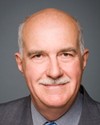The other thing I found very interesting was the fact that you can actually track things that have been tried and the results from these trials. For example, we talk a lot about segregation with regard to mentally ill people in the corrections system. it's very important, from what our witnesses have said, to know exactly how they react to segregation. Some willingly ask for segregation for particular reasons. Again, if they're transferred from jurisdiction to jurisdiction, that information is invaluable, I believe, to making sure they get the treatment that will help them become more proficient in their lifespan. Our goal, of course, is to help them free themselves of the criminal justice system and to be able to be productive individuals.
I did want to share that with the committee, because I did have an opportunity to see the slides. I believe that this could be potentially an answer to that question of continuum of care that continually is coming up. Everyone seems to acknowledge there is a gap in communication between every agency that deals with the mentally ill person.
Can you tell me, is anyone using a similar copy of what you have produced right now?



